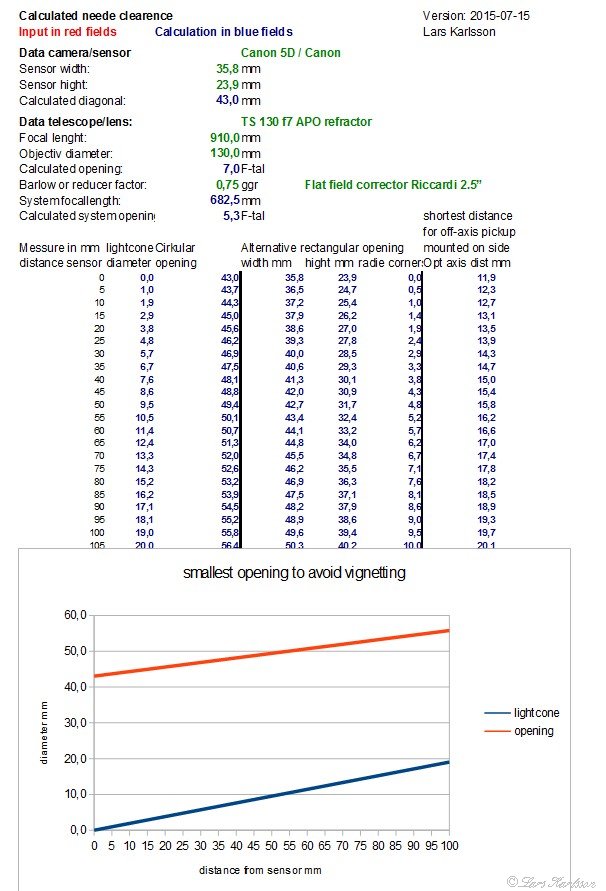|
Advertisement / Annons: |
My astronomy project:
|
Content:
|
7: Calculation of free opening to avoid vignettingHere I have made a detailed excel sheet. Example: 
Here you can now easily calculate forward valuable information on his telescope / camera system. One can see the minimum clear opening required at different distances from the sensor to the example, adapters and filters. If there is not space enough for circular openings maybe there is a chance to have rectangular openings, dimensions in the table. In addition, there are calculated as the minimum distance an off-axis guides must be to not give vignetting. Assumes that it sits along the long side where the sensor is narrowest. I have now measured my optical system where I have vignetting problem. It looks like this:
o.a. = distance from optical axis, ADP = adapter. This will a problem to solve. There is only space for a thin off-axis adapters (max 11mm) and they are not in the larger design than M48. Those with 55mm through hole builds on too much in length to let a DSLR camera be able to connect. Does a mirror less Sony A7 solve the problems? How would the foregoing appear together with a Sony A7:
Significantly better, but no 3 is still a bottleneck. Unfortunately, this adapter from M63 to M48 is very special. In principle, I could grind up the hole in it to 55mm. Since grind of the off-axis adapter's M48 thread and then screw or glue them together. This would improve the passageway through the adapter off-axis, but not completely.
This off-axis adapter has sufficient through hole, 55mm: I have thought a lot about it, but unfortunately it is built with a back focus of 24mm compared to 11mm that my current TS off-axis adapter has. Perhaps it would be possible make it a little thinner, but not enough. Another disadvantage of this tube "hole" up to guide the camera is very small compared with the TS model. But once again, together with a Sony A7 series camera it can maybe be solved. But very much suggest that life in full frame world would be a lot easier with a mirror less Sony A7, but then we have the problem with the raw files of this camera and how to control the camera from computer?
|
|